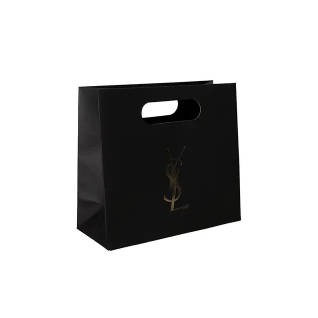Metal packaging, typically made from aluminum or tin, offers a unique combination of premium aesthetics and robust protection. It's often used for products like lip balms, solid perfumes, loose powders, and high-end salves. Metal conveys a modern, sleek, and sometimes vintage feel, depending on the design.
The primary advantages of metal are its superior durability and protective qualities. It is airtight, lightproof, and shatterproof, which helps preserve the integrity and extend the shelf life of sensitive formulations. Aluminum, in particular, is infinitely recyclable without losing its quality, making it a sustainable choice. The main challenges are the higher cost, heavier weight (which increases shipping costs), and potential limitations in shape and design compared to paperboard. Printing on metal can also be more complex and expensive.
Best For: Solid products like balms and powders, limited edition items, and clients aiming for a sleek, protective, or vintage aesthetic.

Comparison at a Glance: Which Material Wins for Your Brand?
To simplify your decision-making process, this table provides a side-by-side comparison of the four materials across key attributes that are crucial for cosmetic clients.
| Attribute | Paperboard | Rigid Box | Plastic | Metal |
|---|---|---|---|---|
| Aesthetics/Feel | Versatile, from basic to premium | High-End, Luxury, Substantial | Practical, can be clear or colored | Sleek, Premium, Protective |
| Durability | Moderate | Very High | Very High (Shatterproof) | Highest (Puncture-proof) |
| Cost | Lowest | Highest | Low to Moderate | High |
| Sustainability | Excellent (Recyclable, Biodegradable) | Good (Reusable, Recyclable core) | Poor (Recyclability varies, fossil fuels) | Excellent (Infinitely Recyclable) |
| Printability/Customization | Highest | High (via wraps) | Good | Moderate |
How to Choose the Right Material for Your Cosmetic Products?
The "best" material is the one that best serves your brand, product, and customer. Answering the following questions will guide you to the perfect choice for your cosmetic line.
Define Your Brand Identity
What is your brand's core message? Are you a luxury, high-end brand? If so, a rigid box is a natural fit. Are you an eco-friendly, all-natural brand? Recycled paperboard is your best bet. Is your brand fun, vibrant, and accessible? A creatively designed paperboard box or a colorful plastic container could work perfectly. Your packaging must be a physical extension of your brand's personality.
Consider Your Product's Needs
What are you selling? A fragile glass bottle of serum requires more protection than a tube of lipstick. A rigid box with a custom insert would be ideal. An oil-based product needs a material that won’t stain or degrade, making plastic or metal a better choice than untreated paperboard. The physical nature, weight, and fragility of your product will heavily influence your material selection.
Align with Your Budget and Scale
What is your cost-per-unit for packaging? Start-ups and mass-market clients often need to prioritize cost-effectiveness, making paperboard the most logical starting point. Luxury clients with higher price points can absorb the cost of rigid or metal packaging. Remember to factor in not just the production cost but also the cost of shipping, as heavier materials like rigid boxes and metal will increase logistical expenses.
Evaluate Your Sustainability Goals
How important is sustainability to your brand and your target audience? If it's a core value, prioritize materials with high recycled content and high recyclability rates, like paperboard and aluminum. If you must use plastic, explore PCR options. Clearly communicating your sustainable packaging choices can build trust and resonate deeply with environmentally conscious consumers.
The Future of Cosmetic Packaging: Trends to Watch
The packaging industry is constantly innovating, driven by a strong demand for sustainability and unique customer experiences. Keep an eye on emerging trends like refillable packaging systems, which reduce overall waste by allowing customers to reuse primary containers. Another key trend is the move toward monomaterials—packaging made from a single type of material—which simplifies the recycling process. Finally, the development of bio-based plastics and compostable materials continues to advance, offering exciting new possibilities for clients looking to minimize their environmental impact.
Final Verdict: Making the Best Choice for Your Cosmetic Line
There is no single winner in the debate between paperboard, rigid, plastic, and metal. Each material serves a distinct purpose. The smart choice comes from a holistic analysis of your brand's DNA, your product's practical needs, your financial realities, and your commitment to the planet. Paperboard is the versatile all-rounder, rigid boxes are the undisputed kings of luxury, plastic is the durable problem-solver, and metal is the protective guardian.By carefully weighing the attributes of each, you can select a material that not only protects your product but also tells a compelling story and creates a lasting connection with your customer.

 English
English 



